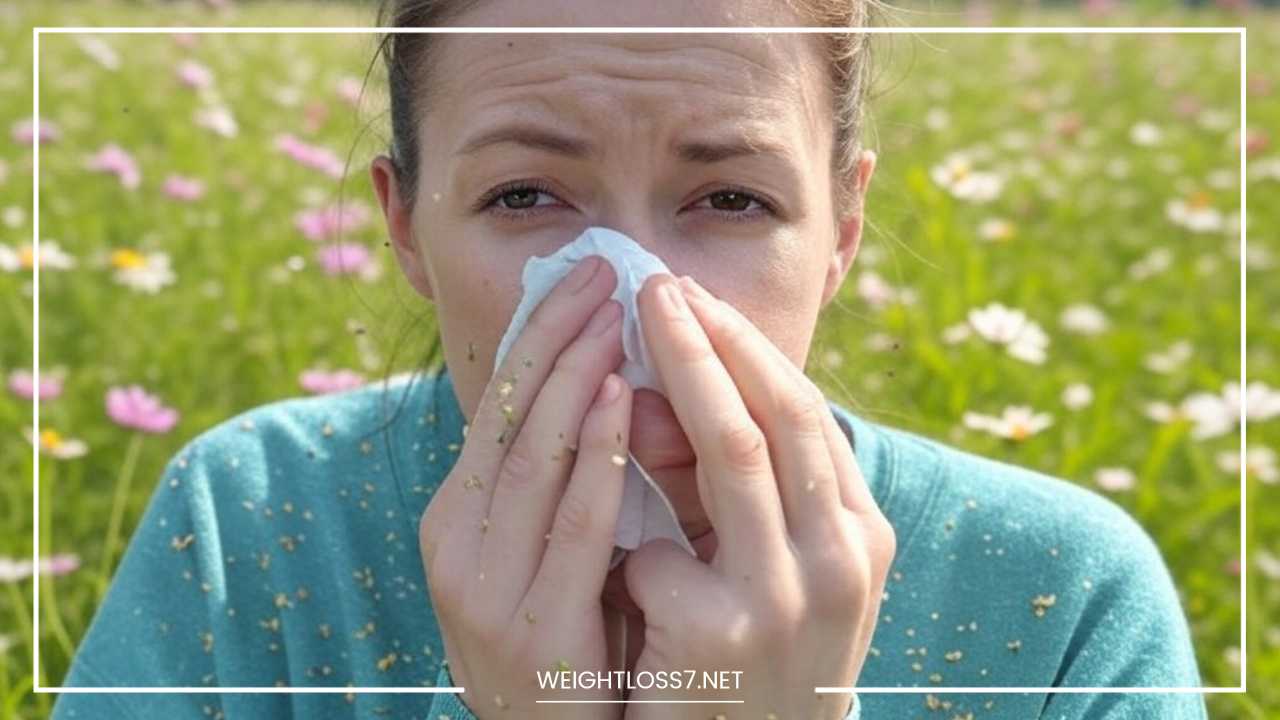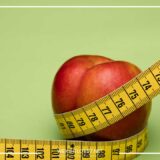Home Remedies for Hay Fever

Home Remedies for Hay Fever
Home Remedies for Hay Fever: Finding Relief from Seasonal Allergies
Hay fever, medically known as allergic rhinitis, is a common condition affecting millions of people around the world.
It occurs when the immune system erroneously identifies harmless substances, such as pollen, mold spores, dust mites, or pet dander, as threats.
In response, the body produces histamines and other chemicals, leading to inflammation and triggering a range of uncomfortable symptoms, including sneezing, nasal congestion, runny nose, itchy or watery eyes, and fatigue. These symptoms can interfere with daily life and reduce the quality of living for those affected.
Though conventional treatments like antihistamines, decongestants, and nasal corticosteroids are widely used to manage hay fever, many individuals turn to natural remedies and home-based treatments to alleviate their symptoms.
These remedies often focus on minimizing exposure to allergens, strengthening the immune system, soothing irritated nasal passages, and reducing inflammation.
The following article delves into various home remedies for hay fever, providing insight into their potential effectiveness, supporting scientific evidence, and essential safety considerations to keep in mind while implementing these strategies.
1. Identifying and Avoiding Triggers: The First Line of Defense
The key to effectively managing hay fever lies in identifying and avoiding specific allergens that trigger symptoms.
Minimizing exposure to these allergens reduces the likelihood of an immune system response. This can involve a multi-pronged approach, combining lifestyle changes, environmental adjustments, and awareness of your surroundings.
Pollen Count Monitoring:
An essential first step is monitoring the pollen count in your local area. Pollen levels vary throughout the year, with certain plants releasing more pollen during specific seasons.
You can track the pollen count via weather apps, websites, or local news broadcasts. Different plants—trees, grasses, and weeds—release pollen at varying times.
Understanding the local pollen calendar is vital, as it allows you to plan outdoor activities accordingly.
During peak pollen seasons, which usually occur in early spring and late summer to fall, it’s best to avoid spending extended periods outdoors, especially during early mornings and late afternoons when pollen levels are highest.
Windy days exacerbate pollen dispersion, so it’s advisable to remain indoors when the weather is gusty.
Staying indoors during these times will significantly reduce your exposure to the allergens responsible for hay fever.
Indoor Air Quality Management:
Creating a sanctuary indoors is crucial for individuals with hay fever. By enhancing indoor air quality, you can minimize exposure to allergens that may accumulate inside.
A great starting point is investing in a high-efficiency particulate air (HEPA) filter. These filters are specifically designed to capture airborne particles like pollen, dust mites, mold spores, and pet dander.
Ensure that HEPA filters are installed in high-traffic areas, particularly in your bedroom and living spaces, to keep allergens at bay while you sleep or relax.
In addition to HEPA filtration, regular cleaning is important to reduce dust and mold accumulation. Dust surfaces, including furniture, shelves, and floors, frequently with a damp cloth, which traps allergens more effectively than dry dusting.
It’s also beneficial to wash bedding, curtains, pillowcases, and other fabrics frequently in hot water, as this can eliminate dust mites and mold.
Seasonal Adjustments:
During peak allergy seasons, it’s wise to keep windows and doors closed, even if the weather outside is inviting. This helps to prevent pollen from entering your home.
In the evening, when pollen levels drop, you can briefly open windows for fresh air, but be cautious of the outdoor pollen levels.
If you’ve spent time outdoors, change your clothes and take a shower to remove any lingering pollen from your skin and hair. This practice can drastically reduce your exposure to allergens once you return indoors.
Additionally, you may want to use a nasal saline rinse after outdoor activities. This rinse flushes out any pollen or other allergens that may have entered your nasal passages, offering immediate relief from congestion and irritation.
Pet Dander Control:
While pets provide love and companionship, their dander can be a significant trigger for hay fever symptoms.
If you have pets, it’s essential to manage pet dander effectively. Regularly groom your pets outside, as brushing them indoors can release dander into the air.
If possible, try to keep pets out of bedrooms and any other spaces where you spend significant time.
Using a HEPA air purifier in rooms where pets spend the most time can also help reduce the concentration of airborne dander.
If you have carpeting in your home, consider replacing it with hard flooring, as it traps fewer allergens and is easier to clean.
2. Nasal Irrigation: Flushing Out Irritants
Nasal irrigation, a method that involves flushing the nasal passages with a saline solution, can provide significant relief from hay fever symptoms.
The process is simple and can be done using a neti pot or other nasal rinse devices available in stores or online.
Allergen Removal:
One of the key benefits of nasal irrigation is its ability to remove allergens directly from the nasal passages.
The saline solution washes away pollen, mold spores, dust mites, and other irritants that may have been inhaled and trapped in the nose. By clearing out these particles, nasal irrigation can alleviate symptoms such as congestion, runny nose, and sneezing.
Inflammation Reduction:
Nasal irrigation not only removes allergens but also helps to reduce inflammation in the nasal passages. This can significantly ease congestion, providing relief from swelling in the nose and sinuses.
Moisturization:
The saline solution used in nasal irrigation also helps moisturize the nasal passages. Dryness in the nose can lead to irritation, crusting, and even increased susceptibility to infections.
By keeping the nasal tissues hydrated, nasal irrigation can prevent this discomfort and help soothe irritated nasal membranes.
When using nasal irrigation, it’s essential to use distilled or sterile water. Tap water may contain harmful bacteria or microorganisms that can cause infections.
Always follow the manufacturer’s instructions for your neti pot or nasal rinse device, and never share your nasal irrigation tools with others to avoid cross-contamination.
3. Herbal Remedies: Nature’s Pharmacy (With Caution)
Herbal remedies have long been used to relieve symptoms of hay fever. These remedies can provide a natural, gentle alternative to conventional medications.
However, it is crucial to consult with a healthcare provider before using herbal supplements, especially if you are pregnant, breastfeeding, or taking medications. Some herbs may interact with prescription medications or cause side effects.
Here are a few herbs traditionally used for hay fever relief:
Butterbur (Petasites hybridus):
Butterbur is an herb known for its anti-inflammatory and antihistamine effects. Some studies suggest that butterbur may be effective in reducing symptoms of hay fever, such as sneezing, nasal congestion, and itchy eyes.
Butterbur contains compounds called petasins and isopetasins, which are believed to block histamine receptors and reduce inflammation in the nasal passages.
Stinging Nettle (Urtica dioica):
Stinging nettle has long been used in traditional medicine to alleviate hay fever symptoms. It contains natural antihistamines and anti-inflammatory compounds, which may help reduce symptoms such as sneezing, runny nose, and itchy eyes. Stinging nettle can be consumed in various forms, including capsules, teas, and tinctures.
Quercetin:
Quercetin is a flavonoid found in foods like onions, apples, and berries. It has both antihistamine and anti-inflammatory properties, making it an effective remedy for hay fever.
Quercetin can be found in supplement form, and many people use it to manage allergy symptoms.
Eyebright (Euphrasia officinalis):
Eyebright is a herb commonly used to treat eye-related symptoms of hay fever, such as redness, watering, and itching.
It has mild anti-inflammatory and soothing effects that can help relieve irritation and discomfort in the eyes caused by pollen exposure.
4. Dietary Approaches: Fueling Your Body’s Defenses
Your diet plays a crucial role in regulating your immune system and managing inflammation. Certain dietary choices can help reduce the severity of hay fever symptoms and strengthen your body’s defenses against allergens.
Anti-inflammatory Diet:
An anti-inflammatory diet, rich in fruits, vegetables, and healthy fats, can help reduce overall inflammation in the body.
Foods that are high in omega-3 fatty acids, such as oily fish (salmon, sardines, and mackerel), walnuts, and flaxseeds, can reduce inflammation and may help alleviate allergy symptoms.
In addition, colorful fruits and vegetables, which are high in antioxidants, can support immune function and reduce inflammatory responses.
Avoiding foods that promote inflammation is equally important. Limit processed foods, sugary drinks, refined grains, and saturated fats, as these can exacerbate inflammatory responses in the body.
Local Honey (With Skepticism):
Local honey is sometimes recommended for hay fever relief due to the belief that it contains trace amounts of local pollen. The idea is that by consuming small amounts of this pollen over time, the body may gradually desensitize itself to the allergens.
However, scientific evidence supporting this theory is limited. While honey can contain various types of pollen, there is no guarantee that the pollen found in honey will match the specific types causing your hay fever.
Probiotic-Rich Foods:
The gut microbiome plays an important role in immune system regulation. A balanced microbiome can help reduce inflammation and strengthen your body’s defenses against allergens.
Probiotic-rich foods, such as yogurt, kefir, kimchi, and sauerkraut, can help maintain a healthy gut and potentially alleviate allergy symptoms.
You may also consider taking probiotic supplements to support gut health during allergy season.
5. Lifestyle Modifications: Holistic Well-Being
In addition to dietary changes and home remedies, adopting healthy lifestyle habits can help manage hay fever symptoms. These habits can support overall immune health and reduce the severity of allergic reactions.
Stress Management:
Chronic stress can exacerbate hay fever symptoms, as it weakens the immune system and increases inflammation in the body.
Engaging in stress-reducing activities such as yoga, meditation, deep breathing exercises, and spending time in nature can help reduce stress and, by extension, alleviate allergy symptoms. Regular relaxation practices can help your body stay balanced during allergy season.
Adequate Sleep:
Getting sufficient, high-quality sleep is essential for immune function. Sleep deprivation can weaken the body’s defenses and make you more susceptible to allergens.
Aim for 7-9 hours of restful sleep each night to support your body’s immune system and reduce allergy-related inflammation.
Regular Exercise:
Exercise has numerous health benefits, including boosting immune function and reducing inflammation. Regular physical activity can help your body cope with allergens more effectively.
However, during high pollen periods, it’s important to avoid outdoor exercise, particularly early in the morning or late in the afternoon, when pollen levels are highest.
6. Essential Oils: Aromatherapy for Relief (With Caution)
Essential oils can be a useful tool in managing hay fever symptoms, though they should always be used cautiously.
Some essential oils have natural decongestant, anti-inflammatory, or antihistamine properties, which can help alleviate symptoms such as congestion, nasal irritation, and headaches.
Eucalyptus Oil:
Eucalyptus oil is well-known for its decongestant properties. When used in a diffuser or diluted with a carrier oil for topical application, eucalyptus oil can help open nasal passages, making it easier to breathe.
Peppermint Oil:
Peppermint oil has a cooling effect and can help relieve nasal congestion, sinus pressure, and headaches. It also has anti-inflammatory properties that may alleviate irritation in the nasal passages.
Lavender Oil:
Lavender oil has calming and anti-inflammatory properties that may help reduce nasal irritation, improve sleep quality, and promote overall relaxation. It can be particularly helpful in managing stress during allergy season.
Always dilute essential oils in a carrier oil (such as coconut or almond oil) before applying them to the skin. Never ingest essential oils, and ensure proper ventilation when using a diffuser.
Perform a patch test before using essential oils on your skin to check for any potential sensitivities or allergic reactions.
7. Acupuncture and Acupressure: Traditional Chinese Medicine Approaches
Acupuncture and acupressure, both rooted in traditional Chinese medicine, are practices that some people find effective for managing hay fever symptoms.
Acupuncture involves inserting thin needles into specific points on the body, while acupressure involves applying pressure to these points.
Some studies suggest that acupuncture and acupressure may help regulate immune responses and reduce inflammation, providing symptom relief for some individuals.
While these methods are not universally effective for everyone, many people report significant improvement after receiving acupuncture or practicing acupressure techniques.
8. Homeopathy: A Controversial Approach
Homeopathy is an alternative medicine system that uses highly diluted substances to stimulate the body’s self-healing abilities.
While some individuals report positive results from homeopathic remedies for hay fever, the scientific evidence supporting the effectiveness of homeopathy is limited and often inconclusive.
If you are interested in exploring homeopathic treatments, consult with a trained homeopath to discuss your symptoms and potential remedies.
Important Considerations and Cautions
- Consult a Healthcare Professional: Always consult a doctor or allergist before starting new remedies, particularly if you have underlying health conditions or are taking prescription medications. A healthcare provider can help you identify specific allergens, recommend suitable treatments, and advise on the safety of combining different remedies.
- Complementary, Not Replacing Conventional Treatments: Home remedies should be viewed as complementary to, rather than replacements for, conventional medical treatments prescribed by your healthcare provider.
- Individual Responses: The effectiveness of home remedies can vary significantly between individuals. Be patient and open to experimenting with different strategies to find what works best for you.
- Allergy Testing: If you continue to experience severe or persistent hay fever symptoms, allergy testing may help you identify specific triggers and guide the selection of more targeted treatments.
- Monitor and Track: Keep a journal of your symptoms, triggers, and remedies to identify patterns and determine what works best for you over time.
Final Thoughts
Hay fever is a debilitating condition that can significantly affect your daily life, but it doesn’t have to control you.
While conventional treatments are important tools in managing symptoms, home remedies can offer natural, supportive relief.
By understanding your allergens, modifying your lifestyle, using natural treatments like nasal irrigation, herbal remedies, and essential oils, and supporting your immune health with proper nutrition and stress management, you can take an active role in reducing the severity of hay fever symptoms.

















